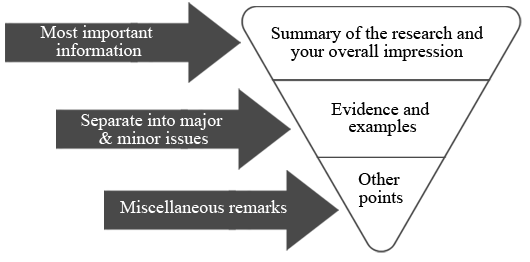
Contents
Abstract
In the medical sciences, the importance of review articles is rising. When clinicians want to update their knowledge and generate guidelines about a topic, they frequently use reviews as a starting point. The value of a review is associated with what has been done, what has been found and how these findings are presented. Before asking ‘how,’ the question of ‘why’ is more important when starting to write a review. The main and fundamental purpose of writing a review is to create a readable synthesis of the best resources available in the literature for an important research question or a current area of research. Although the idea of writing a review is attractive, it is important to spend time identifying the important questions. Good review methods are critical because they provide an unbiased point of view for the reader regarding the current literature. There is a consensus that a review should be written in a systematic fashion, a notion that is usually followed. In a systematic review with a focused question, the research methods must be clearly described. A ‘methodological filter’ is the best method for identifying the best working style for a research question, and this method reduces the workload when surveying the literature. An essential part of the review process is differentiating good research from bad and leaning on the results of the better studies. The ideal way to synthesize studies is to perform a meta-analysis. In conclusion, when writing a review, it is best to clearly focus on fixed ideas, to use a procedural and critical approach to the literature and to express your findings in an attractive way.
The importance of review articles in health sciences is increasing day by day. Clinicians frequently benefit from review articles to update their knowledge in their field of specialization, and use these articles as a starting point for formulating guidelines.[1,2] The institutions which provide financial support for further investigations resort to these reviews to reveal the need for these researches.[3] As is the case with all other researches, the value of a review article is related to what is achieved, what is found, and the way of communicating this information. A few studies have evaluated the quality of review articles. Murlow evaluated 50 review articles published in 1985, and 1986, and revealed that none of them had complied with clear-cut scientific criteria.[4] In 1996 an international group that analyzed articles, demonstrated the aspects of review articles, and meta-analyses that had not complied with scientific criteria, and elaborated QUOROM (QUality Of Reporting Of Meta-analyses) statement which focused on meta-analyses of randomized controlled studies.[5] Later on this guideline was updated, and named as PRISMA (Preferred Reporting Items for Systematic Reviews and Meta-Analyses).[6]
Review articles are divided into 2 categories as narrative, and systematic reviews. Narrative reviews are written in an easily readable format, and allow consideration of the subject matter within a large spectrum. However in a systematic review, a very detailed, and comprehensive literature surveying is performed on the selected topic.[7,8] Since it is a result of a more detailed literature surveying with relatively lesser involvement of author’s bias, systematic reviews are considered as gold standard articles. Systematic reviews can be diivded into qualitative, and quantitative reviews. In both of them detailed literature surveying is performed. However in quantitative reviews, study data are collected, and statistically evaluated (ie. meta-analysis).[8]
Before inquring for the method of preparation of a review article, it is more logical to investigate the motivation behind writing the review article in question. The fundamental rationale of writing a review article is to make a readable synthesis of the best literature sources on an important research inquiry or a topic. This simple definition of a review article contains the following key elements:
-
The question(s) to be dealt with
-
Methods used to find out, and select the best quality researches so as to respond to these questions.
-
To synthetize available, but quite different researches
For the specification of important questions to be answered, number of literature references to be consulted should be more or less determined. Discussions should be conducted with colleagues in the same area of interest, and time should be reserved for the solution of the problem(s). Though starting to write the review article promptly seems to be very alluring, the time you spend for the determination of important issues won’t be a waste of time.[9]
The PRISMA statement[6] elaborated to write a well-designed review articles contains a 27-item checklist (Table 1). It will be reasonable to fulfill the requirements of these items during preparation of a review article or a meta-analysis. Thus preparation of a comprehensible article with a high-quality scientific content can be feasible.
Contents and format
Important differences exist between systematic, and non-systematic reviews which especially arise from methodologies used in the description of the literature sources. A non-systematic review means use of articles collected for years with the recommendations of your colleagues, while systematic review is based on struggles to search for, and find the best possible researches which will respond to the questions predetermined at the start of the review.
Though a consensus has been reached about the systematic design of the review articles, studies revealed that most of them had not been written in a systematic format. McAlister et al. analyzed review articles in 6 medical journals, and disclosed that in less than one fourth of the review articles, methods of description, evaluation or synthesis of evidence had been provided, one third of them had focused on a clinical topic, and only half of them had provided quantitative data about the extend of the potential benefits.[10]
Use of proper methodologies in review articles is important in that readers assume an objective attitude towards updated information. We can confront two problems while we are using data from researches in order to answer certain questions. Firstly, we can be prejudiced during selection of research articles or these articles might be biased. To minimize this risk, methodologies used in our reviews should allow us to define, and use researches with minimal degree of bias. The second problem is that, most of the researches have been performed with small sample sizes. In statistical methods in meta-analyses, available researches are combined to increase the statistical power of the study. The problematic aspect of a non-systematic review is that our tendency to give biased responses to the questions, in other words we apt to select the studies with known or favourite results, rather than the best quality investigations among them.
As is the case with many research articles, general format of a systematic review on a single subject includes sections of Introduction, Methods, Results, and Discussion (Table 2).
Preparation of the review article
Steps, and targets of constructing a good review article are listed in Table 3. To write a good review article the items in Table 3 should be implemented step by step.[11–13]
The research question
It might be helpful to divide the research question into components. The most prevalently used format for questions related to the treatment is PICO (P – Patient, Problem or Population; I-Intervention; C-appropriate Comparisons, and O-Outcome measures) procedure. For example In female patients (P) with stress urinary incontinence, comparisons (C) between transobturator, and retropubic midurethral tension-free band surgery (I) as for patients’ satisfaction (O).
Finding Studies
In a systematic review on a focused question, methods of investigation used should be clearly specified.
Ideally, research methods, investigated databases, and key words should be described in the final report. Different databases are used dependent on the topic analyzed. In most of the clinical topics, Medline should be surveyed. However searching through Embase and CINAHL can be also appropriate.
While determining appropriate terms for surveying, PICO elements of the issue to be sought may guide the process. Since in general we are interested in more than one outcome, P, and I can be key elements. In this case we should think about synonyms of P, and I elements, and combine them with a conjunction AND.
One method which might alleviate the workload of surveying process is “methodological filter” which aims to find the best investigation method for each research question. A good example of this method can be found in PubMed interface of Medline. The Clinical Queries tool offers empirically developed filters for five different inquiries as guidelines for etiology, diagnosis, treatment, prognosis or clinical prediction.
Evaluation of the Quality of the Study
As an indispensable component of the review process is to discriminate good, and bad quality researches from each other, and the outcomes should be based on better qualified researches, as far as possible. To achieve this goal you should know the best possible evidence for each type of question The first component of the quality is its general planning/design of the study. General planning/design of a cohort study, a case series or normal study demonstrates variations.
A hierarchy of evidence for different research questions is presented in Table 4. However this hierarchy is only a first step. After you find good quality research articles, you won’t need to read all the rest of other articles which saves you tons of time.[14]
Formulating a Synthesis
Rarely all researches arrive at the same conclusion. In this case a solution should be found. However it is risky to make a decision based on the votes of absolute majority. Indeed, a well-performed large scale study, and a weakly designed one are weighed on the same scale. Therefore, ideally a meta-analysis should be performed to solve apparent differences. Ideally, first of all, one should be focused on the largest, and higher quality study, then other studies should be compared with this basic study.
Conclusions
In conclusion, during writing process of a review article, the procedures to be achieved can be indicated as follows: 1) Get rid of fixed ideas, and obsessions from your head, and view the subject from a large perspective. 2) Research articles in the literature should be approached with a methodological, and critical attitude and 3) finally data should be explained in an attractive way.
[“source=ncbi.nlm.nih”]








